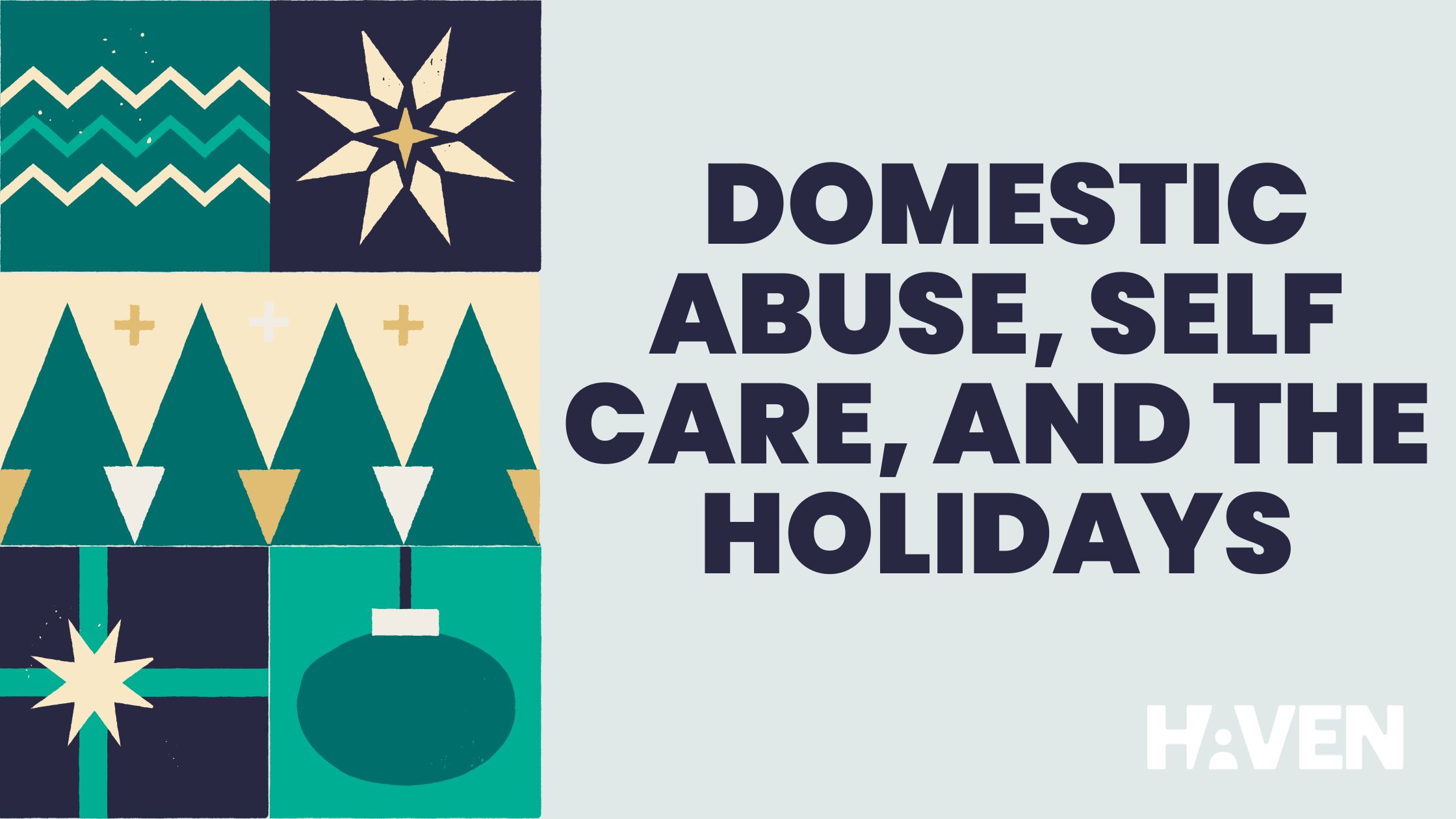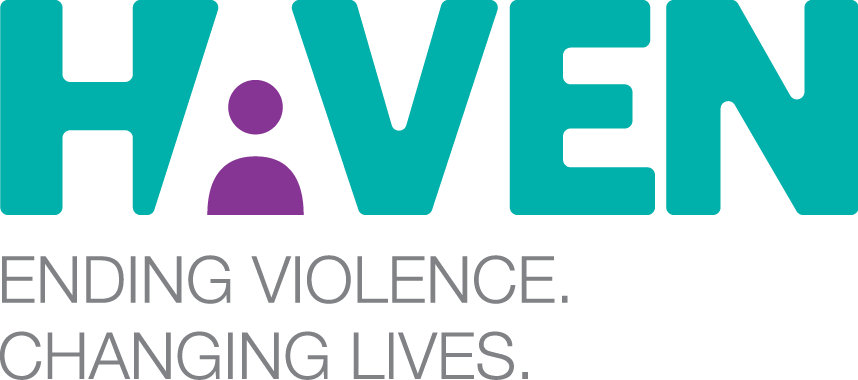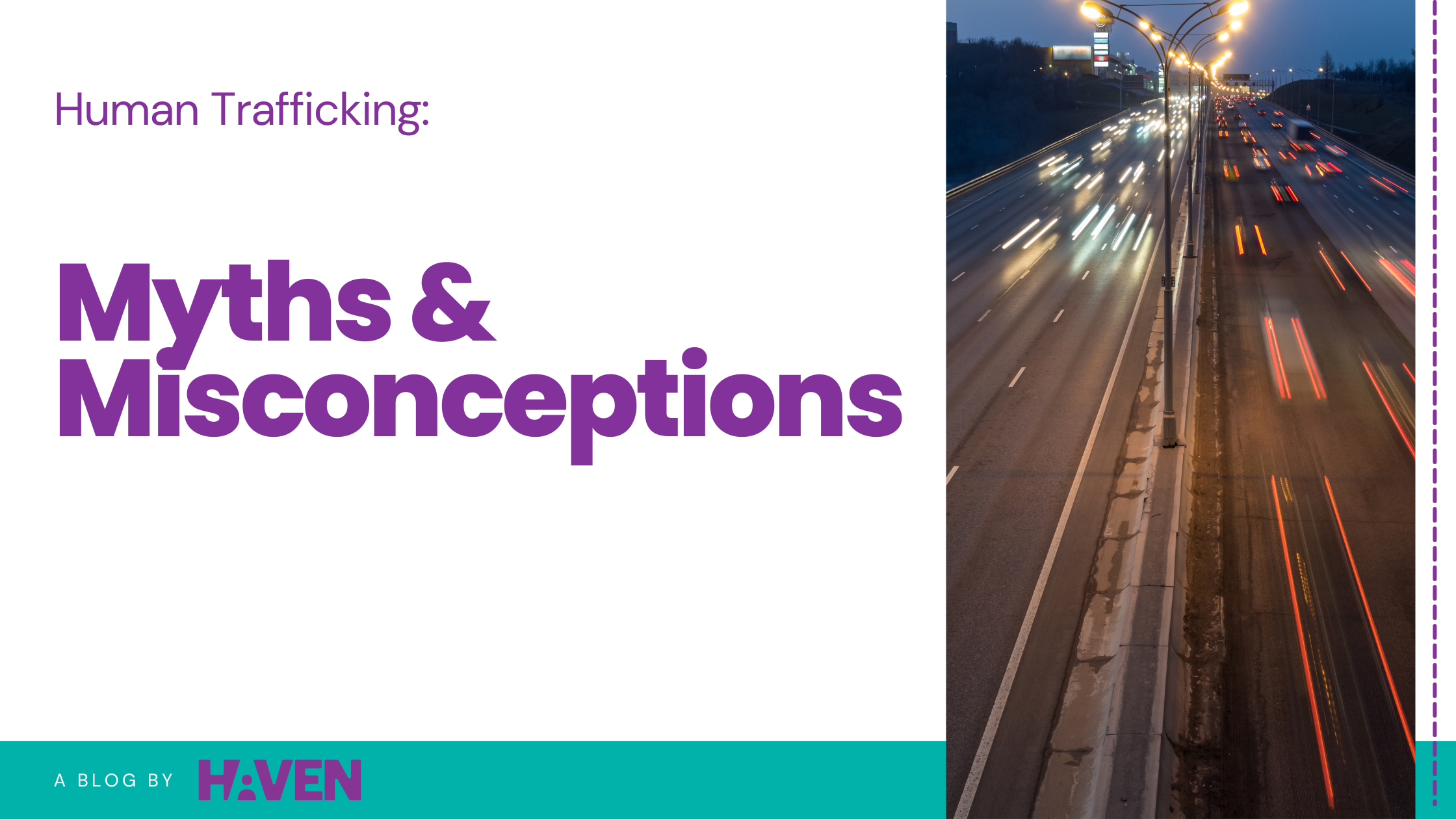
Human Trafficking: Myths and Misconceptions
- hvadmin
- January 11, 2023
- Uncategorized / abuse / Supporting Survivors
- 0 Comments
January is Human Trafficking Prevention Month and Stalking Awareness Month. Although this blog will focus on Human Trafficking, you can learn more about stalking here. Additionally, for more information about “Coercive Control” (the term utilized for how perpetrators of human trafficking control their victims) you can read our post about coercive control and human trafficking here.
This post will explain the common myths and misconceptions about human trafficking, common signs to look out for, and local organizations survivors can reach out to for help.
What is Human Trafficking?
Human trafficking is the “exploitation of a person through labor, services, or a commercial sex act by force, fraud, or coercion” (NHHTCTF, 2022). Under section 633:7, NH Law classifies trafficking in persons as a Class A Felony. Every year, millions of people are trafficked worldwide—including in the United States and New Hampshire.
Traffickers utilize violence, manipulation, false promises of well-paying jobs, and romantic relationships to lure in and control their victims (DHS, 2022). Human trafficking can be forced commercial sex acts, but also forced labor. See the Department of Homeland Security’s Blue Campaign to learn more about human trafficking and common tactics.

Myths and Misconceptions
Myth #1: Human Trafficking doesn’t happen in the U.S. or New Hampshire.
Fact: Human trafficking occurs in every country and state, including the USA and NH, possibly in your own community (DHS, 2022). Take a look at the heat map below with data collected from the National Human Trafficking Hotline. It’s important to note that all of their data is only from people who called or utilized their resources and most likely these spots are bigger.

The seacoast especially is a common route for traffickers, traveling to or from Boston. This is why it’s so important to have an accurate lens on the reality of human trafficking in the area.
Myth #2: Human trafficking only happens to foreign-born people or immigrants, not Americans.
Fact: Human trafficking victims and survivors can be and are any age, race, gender, socio-economic status, or nationality (DHS, 2022). In fact, “83% of sex trafficking victims are United States citizens“(MBF Prevention Education, 2022).
Myth #3: Human trafficking only happens in illegal or underground industries.
Fact: Human trafficking cases have been reported in every industry: restaurants, cleaning services, farming, factories, and more (NHTH, 2022).

Myth #4: Individuals must be forced or coerced into sex acts to be considered a human trafficking victim.
Fact: Review our post about coercive control here, as the trafficker’s control may look different than obvious physical force. Additionally, any child under the age of 18 involved in commercial sex acts is automatically considered child sex trafficking or sexual abuse—regardless of whether they were considered forced or coerced (DHS, 2022). All adults in NH are mandated reporters, if you suspect a child is being trafficked call HAVEN at (603) 994-SAFE , DCYF at (800) 894-5533, or for an immediate emergency call 911.
Myth #5: People who are being trafficked are physically unable to leave their situations such as being locked or tied up.
Fact: This is sometimes the case. However, in the majority of cases, survivors feel they have to stay for many complicated reasons (NHTH, 2022). Such as lacking the necessities of financial means of escape, important/necessary documentation is being held (i.e. driver’s license, SS card, birth certificate, green card, etc.), transportation, or fear for their or children’s safety if they were to leave. Similar to domestic violence situations, traffickers utilize many methods to control and isolate their victims into feeling they have to stay. See HAVEN’s blog post in 2020 “Why Don’t They Just Leave” which pertains to Domestic Abuse but is still pertinent to abusers/traffickers’ methods.
Myth #6: All traffickers are strangers who reach out to their victims on the internet or in isolated public places (ie. Gas stations, alley ways, etc.).
Fact: Although internet safety is certainly important for this reason, it’s highly inaccurate that the trafficking “recruiters” are always strangers. Many survivors have been trafficked by family members including parents/caregivers, romantic partners, and employers. Polaris’ analysis of 2021 Human Trafficking data found that family members or caregivers accounted for 33% of human trafficking recruiters (Polaris, 2021). Even more frightening, total strangers only account for less than 18% of human trafficking recruiters. See pie chart below.

Myth #7: Human trafficking victims will seek help when in public.
Fact: See Myth #5. There are many reasons victims may be unable or afraid to get help. Additionally, due to sex work stigma they may fear criminal retribution if they were to come forward.
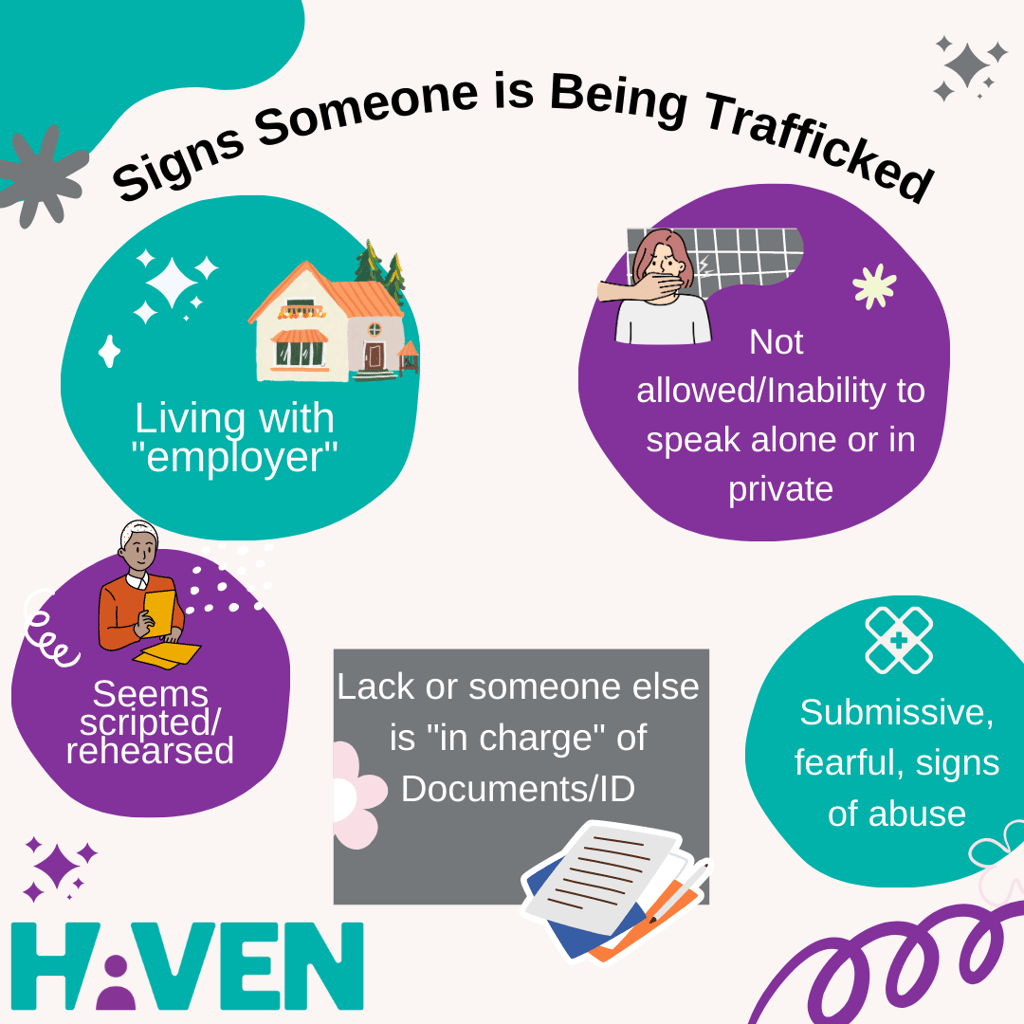
- Is not free to leave or come and go as they wish,
- Is under 18 and providing commercial sex acts,
- Is in the commercial sex industry and has a pimp/manager,
- Is unpaid, paid very little, or paid only through tips
- Works excessively long and/or unusual hours,
- Is not allowed breaks or suffers under unusual restrictions at work
- Owes a large debt and is unable to pay it off
- Was recruited through false promises concerning the nature of their work
- High-security measures exist in the work and/or living locations (e.g. opaque windows, boarded-up windows, bars on windows, barbed wire, security cameras, etc.)
- Poor mental health or abnormal behavior
- Fearful, anxious, depressed, submissive, tense, or nervous/paranoid
- Exhibits unusually fearful or anxious behavior after someone mentions law enforcement
- Avoids eye contact
- Poor Physical health
- Lacks healthcare
- Appears malnourished
- Shows signs of physical and/or sexual abuse, physical restraint, confinement, or torture
- Lack of control
- Has few or no personal possessions
- Is not in control of their own money, no financial records, or bank account
- Is not in control of their own identification documents (ID or passport)
- Is not allowed or able to speak for themselves (a third party may insist on being present and/or translating)
- Other
- Claims is “just visiting” but unable to clarify where they are staying/address
- Lack of knowledge of whereabouts and/or do not know what city they are in
- Loss of sense of time
- Numerous inconsistencies in their story”
If you suspect a person is a victim or perpetrator of human trafficking, it’s important to protect your safety as well and never confront them directly.
Resources/Ways to Help or Get Help
- Polaris — “Context is key to being able to help understand if what you are seeing is trafficking” Polaris has a page for people in specific professions with signs to look out for/resources (i.e if you’re in a health professional, in the hotel industry, etc.).
- HAVEN – If you suspect someone is a victim of human trafficking, and want support with next steps you can contact an advocate 24/7 at (603) 994-SAFE or access our online chat feature on business days 9-4 at havennh.org
- National Human Trafficking Hotline – You can call for support whether you suspect human trafficking or need help 24/7 at 1-(888) 373-7888 , text 233733, or use their chat feature
- To report Human Trafficking to law enforcement, please call your local police department or call 1-866-347-2423 and ask to be connected to the Homeland Security Investigations (HSI) Duty Agent in Manchester, NH
To learn more about resources, training, or getting involved visit the NH Human Trafficking Collaborative Website at www.nhhumantraffickingtaskforce.com.
References
Blue Campaign. (2022, August 25). Myths and misconceptions. Myths and Misconceptions | Homeland Security. Retrieved from https://www.dhs.gov/blue-campaign/myths-and-misconceptions
Blue Campaign. (2022, September 22). What is human trafficking? What Is Human Trafficking? | Homeland Security. Retrieved from https://www.dhs.gov/blue-campaign/what-human-trafficking
MBF. (2020, July 22). Why you should be concerned about human trafficking. Monique Burr Foundation. Retrieved from https://www.mbfpreventioneducation.org/concerned-human-trafficking/#:~:text=In%20fact%2C%2083%25%20of%20sex,likely%20happening%20in%20your%20neighborhood.
National Human Trafficking Hotline. (2022, November 15). National Statistics. National Human Trafficking Hotline. Retrieved from https://humantraffickinghotline.org/en/statistics
National Human Trafficking Hotline. (2022, November 15). New Hampshire Hotline Statistics. National Human Trafficking Hotline. Retrieved from https://humantraffickinghotline.org/en/statistics/new-hampshire
New Hampshire Human Trafficking Collaborative Taskforce. (2023). Human trafficking indicators. New Hampshire Human Trafficking Collaborative Task Force. Retrieved from https://www.nhhumantraffickingtaskforce.com/human-trafficking-indicators
Polaris. (2017, August 31). New Hampshire Profile: Efforts to Combat Human Trafficking. The Administration for Children and Families. Retrieved from https://www.acf.hhs.gov/media/3457
Polaris. (2023). Myths & Facts. National Human Trafficking Hotline. Retrieved from https://humantraffickinghotline.org/en/human-trafficking/myths-facts
You Might Also Like
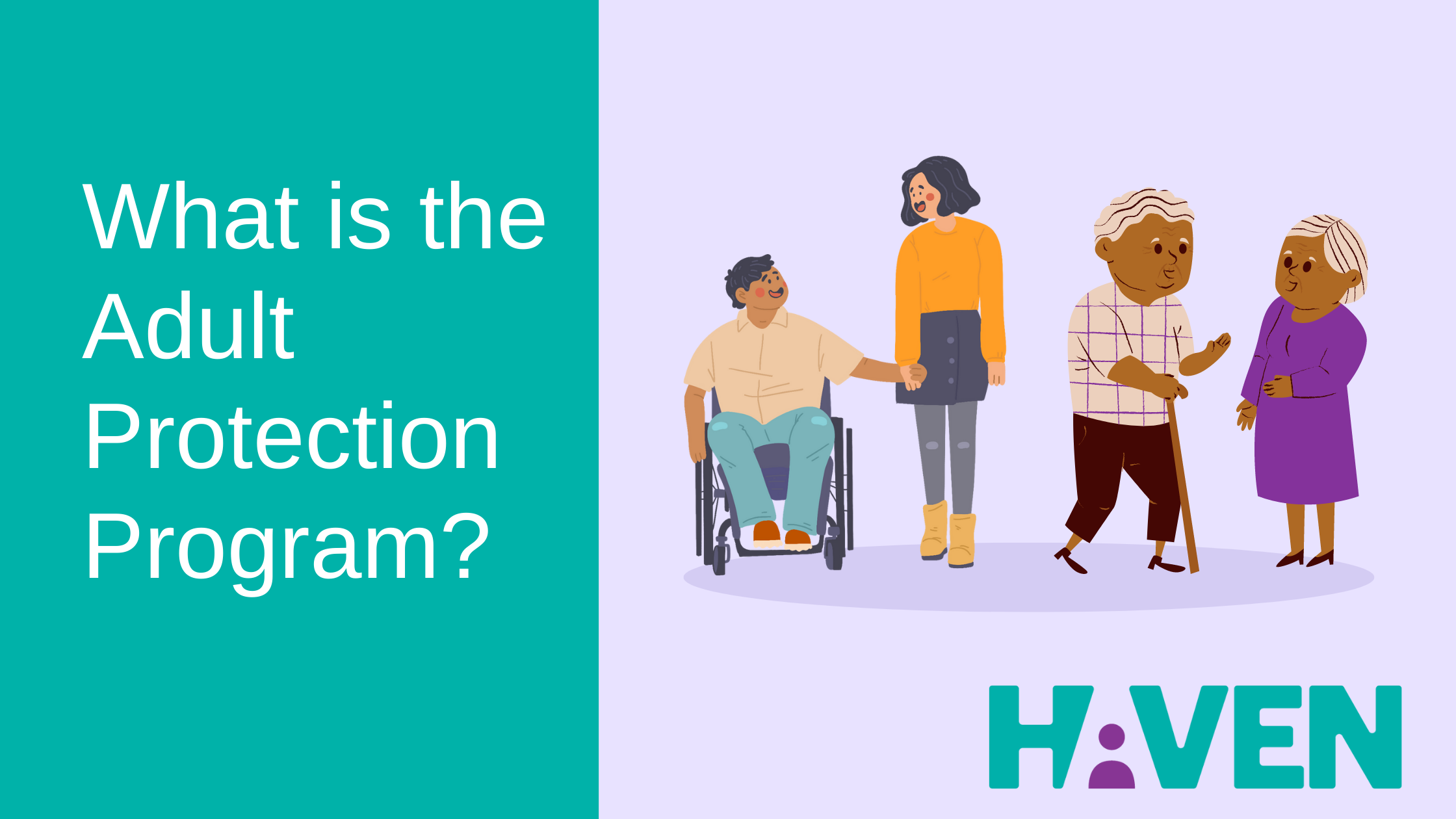
What is the Adult Protective Program?
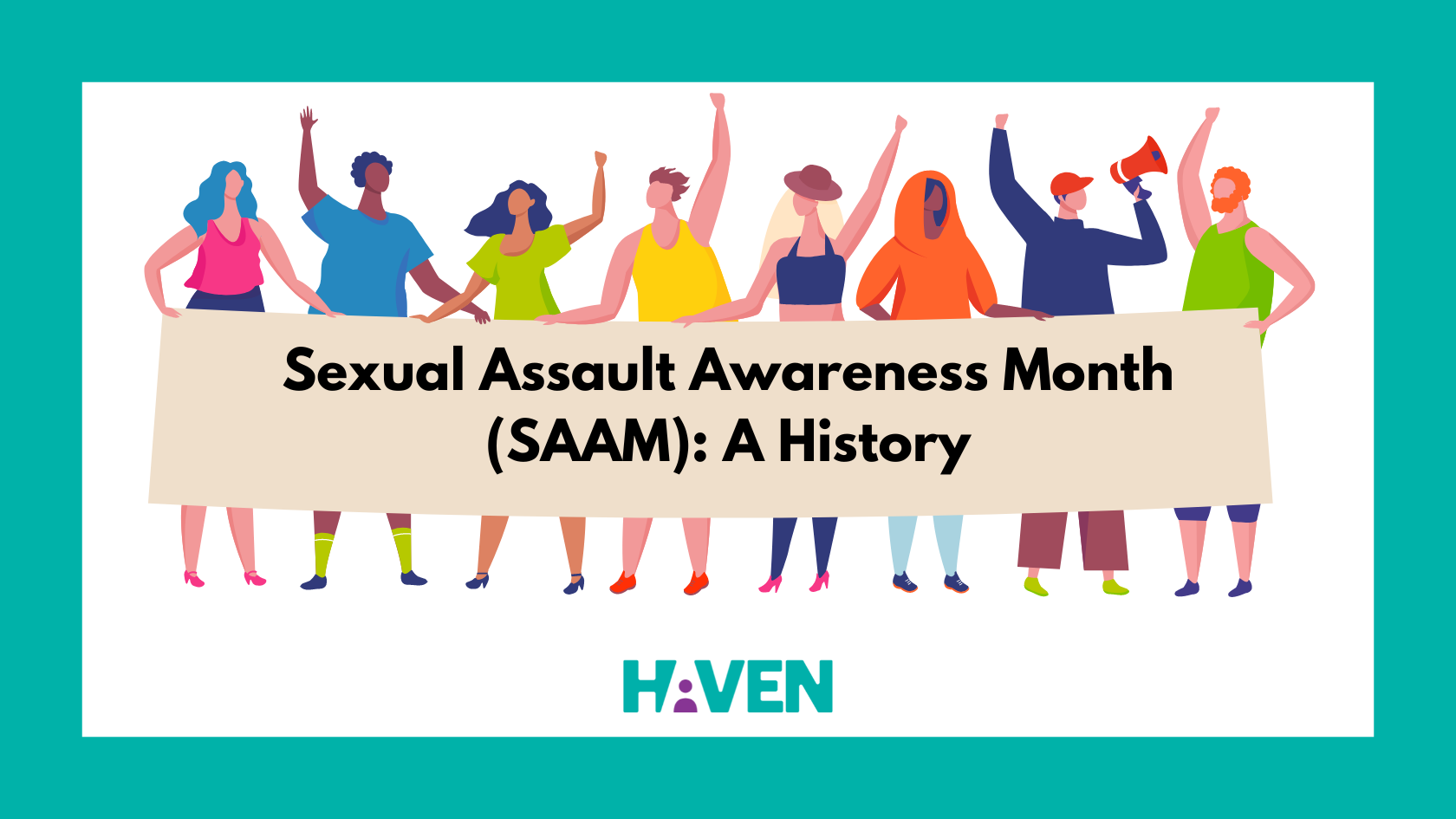
Sexual Assault Awareness Month (SAAM): A History
